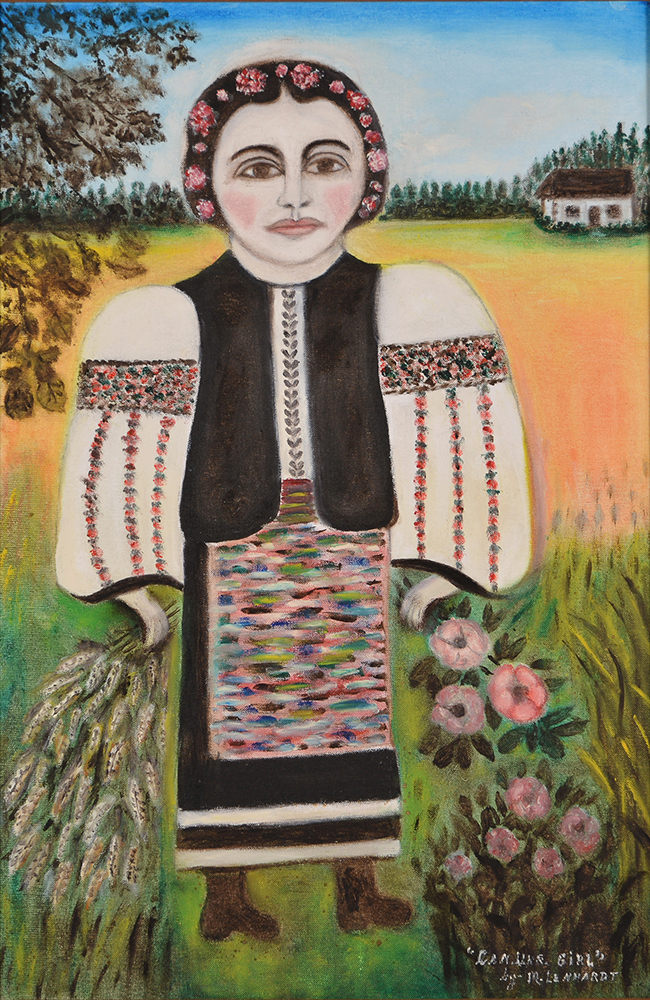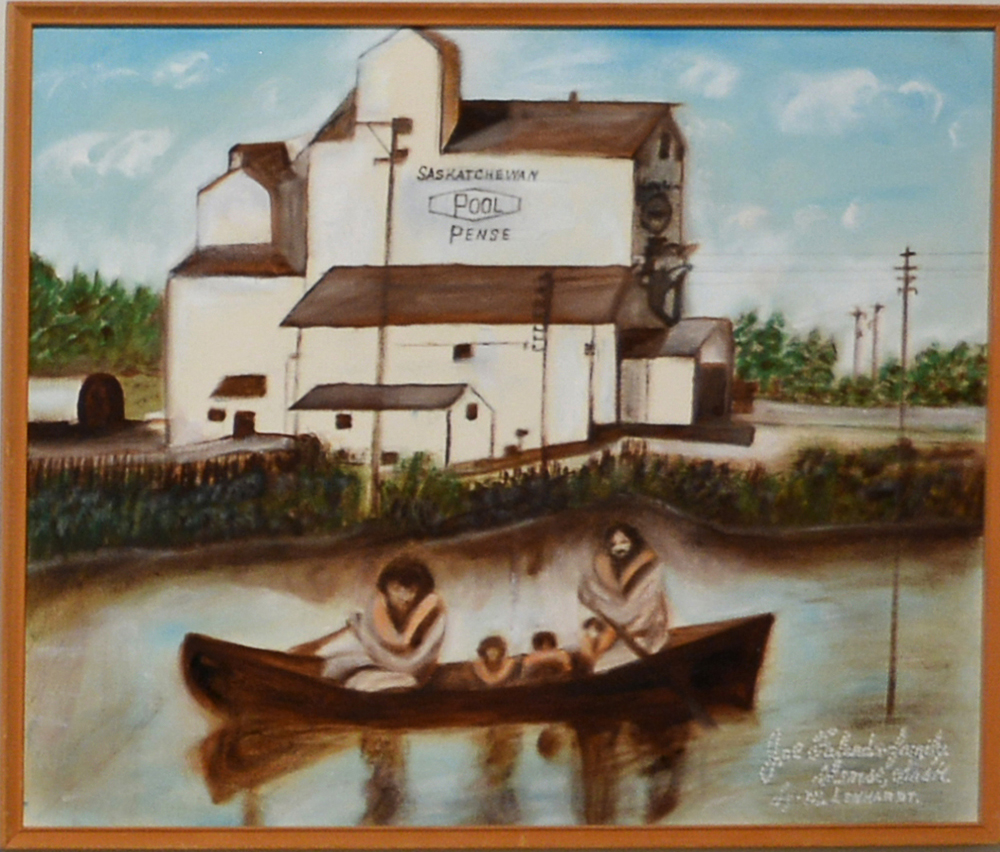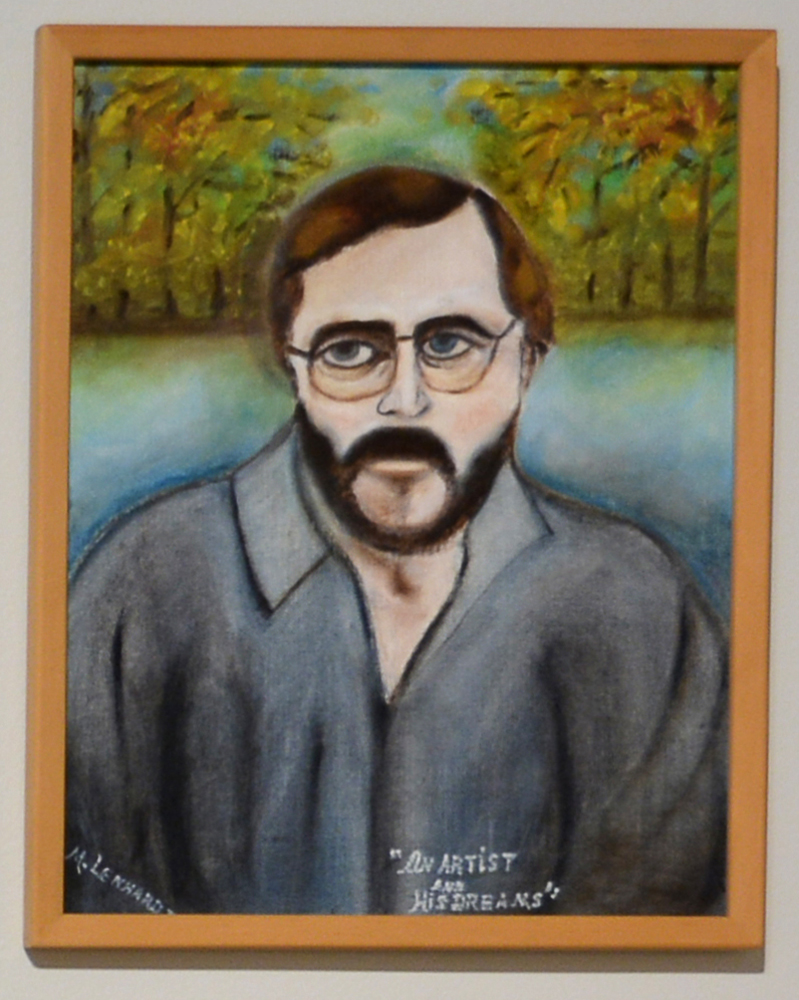Molly Lenhardt
Molly Lenhardt was a relatively isolated vernacular artist. This did not stop her from finding connections and an audience for her work. Lenhardt grew up in Melville, Saskatchewan. After studying business in Yorkton, she returned to Melville and ran a variety store with her husband. Encouraged by her family, she began painting at an early age. She saw it as her calling to document Ukrainian costume, symbols, and paintings. Her work was unique and did not fit in with other typical self-taught artists or artists in the mainstream.
Lenhardt’s subjects centered on her own memories of her early childhood and her Ukrainian heritage. She received national acclaim for her depictions of Ukrainian clothing and symbols. Lenhardt’s “Ukrainian pioneer series” reflects personal experience and the impulse to document history. The series describes figures of various ages in ethnic costumes. These works are informed by her frequent visits to the annual National Ukrainian Festival in Dauphin, Manitoba.
Lenhardt took some time away from painting while raising children and first running the variety store. When she returned to painting she took a class at the community college to refresh her skills. She did not enjoy the classes which taught by copying other pictures. “It was almost like paint-by-number… it wasn’t my idea of art.” 1
She felt that her art was okay, when she was accepted into the 1973 Watrous Art Salon. The adjucator at that salon was Joe Fafard, an internationally recognized sculptor from Pense, Saskatchewan. Fafard recalls of this adjudication that introduced him to Lenhardt’s work:
There were some finely-rendered paintings in the show, but they were just slick and had nothing to say. While, like other folk art, Molly’s work dealt with a much more difficult thing, which is the expressive quality of the picture rather than just the technical rendition in it.2
Lenhardt benefited from the support of Fafard and David Thauberger. They both encouraged and promoted her work and that of other prairie folk artists.
Lenhardt showed appreciation for this support. She painted portraits of Thauberger, Vic Cicansky, and the Fafard family. These paintings show community and mutual respect between vernacular artists and contemporary artists. They were made in her particular style – flat and frontal. Thauberger’s compositional strategies, continue to give nods to Lenhardt. Both artists present flattened, frontal perspectives that are pushed into the foreground.
Relative isolation can highlight the need for connection and community. Lenhardt’s art has been recognized for its contribution to the Ukrainian community. She was designated as a “Nation Builder” by the Saskatchewan Provincial Council of the Ukrainian Congress of Canada. She was also successful in finding a community of artists that appreciated and encouraged her work.
See Bibliography for sources.




